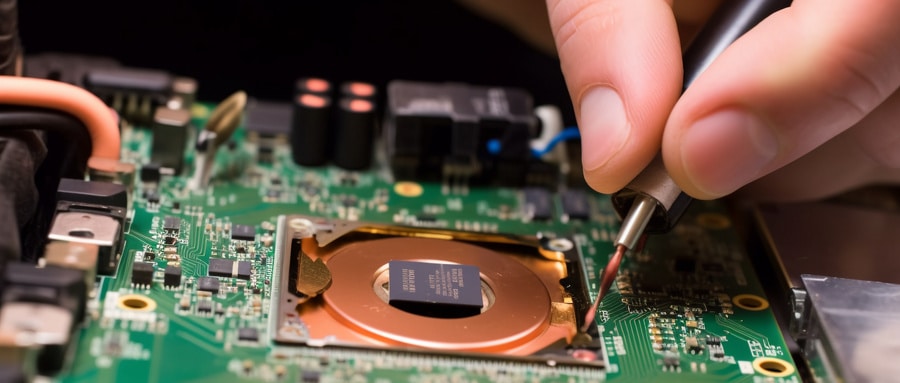RF PCB Design: An In-Depth Guide
Copper, laminates and small electrical components come together in astonishing harmony to form printed circuit boards (PCBs). This guide focuses on one type in particular – Radio Frequency PCBs – providing an extensive exploration of their intricacies, challenges and revolutionary potential.
1. Understanding RF PCB Design
In order to understand RF PCB design, one must gain an in-depth knowledge of its fundamentals. Simply stated, RF technology refers to oscillation rate of electromagnetic radio waves carrying radio signal; otherwise known as frequency. Key for wireless communication, this technology is utilized across sectors including telecomm, medical, military and space exploration.
2. Material Selection Principles (essence of material selection)
Material selection plays a critical role in an RF PCB design’s effectiveness. Materials with low dielectric constant, high thermal conductivity and an effective loss tangent have the power to drastically alter RF performance; to fully grasp their significance and make informed decisions when selecting Teflon, Arlon or Copper materials is key to becoming an adept designer of radio frequency designs.
3. Process of RF PCB Design
From concept to implementation, RF PCB design involves several complex steps. Beginning with understanding and defining circuit requirements and specifications, selecting materials and software appropriate to designing board layout, testing/modifying designs as necessary and finally testing/modifying designs again as necessary – diving deep into this journey provides valuable insight into creating and refining RF boards.
4. Challenges Involved With PCB Design
Though RF PCB design offers amazing capabilities, its complexity can present unique obstacles. Addressing electromagnetic interference, heat management issues, and precision requirements across every design stage can present daunting obstacles; understanding these hurdles is the key to successfully navigating RF design’s tricky maze and optimizing product performance.
5. Future of RF PCB Design
With technological developments, RF PCB design is expected to reach new heights. Trends such as miniaturization, green technology integration and connectivity with IoT devices show promise of this exciting field’s evolution; being aware of these trends provides insight into its path.
6. Conclusion
RF PCB design stands at the crossroads between scientific brilliance and technological innovation. As wireless communication becomes an ever more indispensable service, demand for advanced RF PCBs continues to increase; making this an area that calls out for experimentation. Gaining expertise in this area could mean being at the forefront of our technological future.

Keywords for RF PCB design include radio frequency design, material selection, the RF design process, challenges associated with its creation and future trends in PCB technology for wireless communication as well as technological innovation.
Sources for this content include:
1. “RF PCB Materials and Construction Techniques for Industrial and Commercial Applications.”
2. “Challenges in RF PCB Design: An Industry Insight.”
3 .”Future Trends in RF PCB Design: A Technological Outlook.”
FAQ:
- What is RF Printed Circuit Board design?
RF Printed Circuit Board design refers to the process of creating a printed circuit board (PCB) that works with radio frequency (RF) signals. These signals typically range from 3 kHz to 300 GHz. RF Printed Circuit Board design is a specialized field due to the high-frequency nature of the signals and the unique challenges they present. - What are the challenges in RF Printed Circuit Board design?
RF Printed Circuit Board designs can encounter issues related to signal loss, impedance mismatch, cross-talk, and noise, which can affect the performance of the circuit. Such issues are often exacerbated by the high frequencies involved. - What industries use RF Printed Circuit Board design most often?
RF Printed Circuit Board design is used extensively in industries such as telecommunications, medical electronics, aerospace, and defense. Any industry that uses wireless communication can benefit from RF Printed Circuit Board design. - How can I learn RF Printed Circuit Board design?
You can learn RF Printed Circuit Board design through a combination of academic courses, industry training programs, books, and online resources. Practical hands-on experience is as important as theoretical knowledge in this field. - Which software is best for RF Printed Circuit Board design?
There are many sophisticated software tools available for RF Printed Circuit Board design. Tools like Altium Designer, Cadence Allegro, and Keysight’s Advanced Design System (ADS) are widely used. They also provide simulation tools to predict and solve high-frequency design problems. - What are the key principles in RF Printed Circuit Board design?
Critical principles include understanding and managing impedance, minimizing signal loss, and dealing with issues such as cross-talk and noise. Effective grounding and careful component and trace placement are also essential. - How important is the choice of materials in RF Printed Circuit Board design?
Material choice is extremely important. Materials with low dielectric loss, consistent dielectric constant, and good thermal characteristics are commonly used for RF applications. Examples include FR4, Rogers, and Teflon substrates. - Are there any specific standards or regulations for RF PCBs?
Yes, regulatory bodies such as the Federal Communications Commission (FCC) in the U.S. enforce standards for radiated emissions. The equipment should also satisfy safety standards and regulations set by organizations such as the Underwriters Laboratories (UL). - What are the testing protocols for RF PCBs?
Testing of RF PCBs can include verifying power output, frequency accuracy, harmonics, and overall performance under different conditions. Specialized equipment like network analyzers, spectrum analyzers, and oscilloscopes are used for testing. - Can I do RF PCB design as a hobby?
While you can certainly explore RF PCB design as a hobby, it’s a complex field requiring a substantial understanding of electronics, materials, and high-frequency physics. You also need to consider the safety and legal aspects of operating RF equipment.























